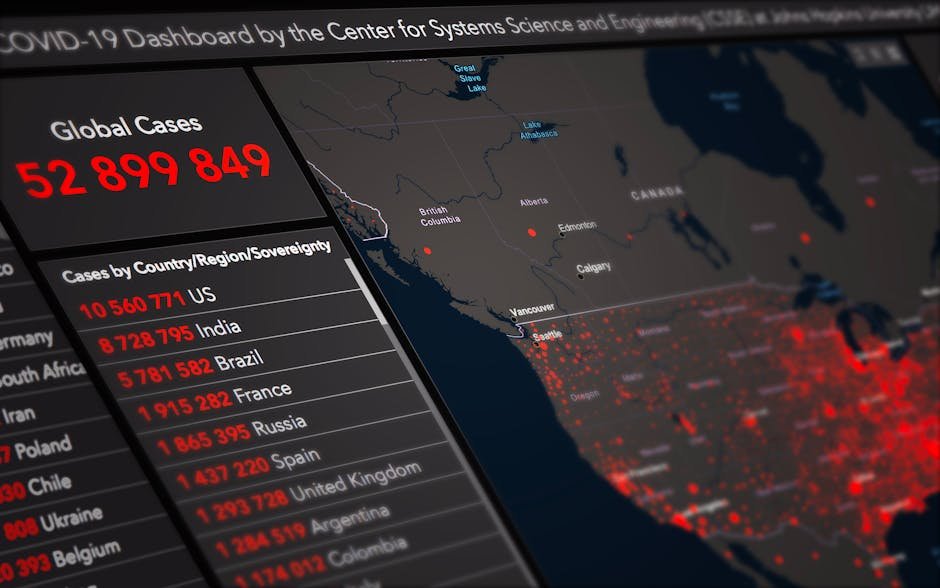Hey, new digital nomad! Ready to swap your desk for a laptop on a Thai beach or a Lisbon café? With over 35 million digital nomads worldwide in 2025 and 60+ countries offering nomad visas, the lifestyle is calling. But as a beginner, it’s easy to trip up—think visa issues, burnout, or blown budgets. This guide covers the top mistakes beginner digital nomads make and how to avoid them, packed with practical tips tailored for 2025. Drawing from nomad communities, X insights, and current trends, here’s how to kick off your journey without the rookie errors.
Why Avoid These Mistakes?
Digital nomadism offers freedom, cultural immersion, and affordable living (e.g., $500–$1,000 USD/month in Thailand), but missteps can derail your adventure. Common pitfalls like unstable income or poor planning can lead to stress, financial strain, or even cutting your trip short. By sidestepping these errors, you’ll thrive in hubs like Chiang Mai or Medellín, balancing work and travel seamlessly.
Top 10 Mistakes to Avoid as a Beginner Digital Nomad
Here are the biggest blunders beginners make, with actionable advice to stay on track.
1. Not Securing Stable Income First
Jumping into nomad life without consistent earnings is risky. Freelancers may lose clients, and remote jobs can be unstable.
- Mistake: Quitting your job to freelance in Bali without a client pipeline.
- Fix: Line up 2–3 clients or a remote job paying $2,000–$5,000 USD/month before leaving. Use platforms like Upwork or LinkedIn to build a roster. Aim to cover visa thresholds (e.g., Spain’s $2,853 USD/month).
- Example: A beginner secures a $3,000 USD/month remote marketing gig, ensuring Thailand’s LTR visa and Chiang Mai’s $600 USD/month budget are covered.
- Why It Works: Stable income prevents financial panic and meets visa requirements.
2. Ignoring Visa Requirements
Overstaying tourist visas or misunderstanding nomad visa rules can lead to fines, bans, or deportation.
- Mistake: Assuming a 30-day Thai tourist visa covers a 6-month stay.
- Fix: Research visas like Costa Rica’s Digital Nomad Visa ($3,000 USD/month income) or Mauritius’ free Premium Travel Visa ($1,500 USD/month). Apply early via embassies or portals like Nomad List. Use agents like Emerhub ($500–$2,000 USD) for complex visas like Malaysia’s MTEP.
- Example: A nomad applies for Portugal’s D8 Visa ($3,511 USD/month) 2 months ahead, avoiding last-minute stress.
- Why It Works: Proper visas ensure legal stays and access to local services.
3. Underestimating Costs
Nomad life seems cheap, but hidden expenses—flights, insurance, visas—add up fast.
- Mistake: Budgeting $500 USD/month for Bali but forgetting $1,000 USD flights or $150 USD/month insurance.
- Fix: Plan a realistic budget: $500–$1,000 USD/month (Thailand), $900–$1,600 USD/month (Portugal). Include rent ($300–$800 USD), food ($100–$300 USD), co-working ($100–$300 USD), insurance ($50–$150 USD), and travel ($200–$600 USD). Use apps like YNAB ($15 USD/month) to track spending.
- Example: A nomad budgets $1,200 USD/month for Medellín, covering rent ($500 USD), food ($200 USD), and extras.
- Why It Works: Comprehensive budgeting avoids financial surprises.
4. Choosing Destinations Based on Hype
Picking trendy spots like Bali or Tulum without researching infrastructure or costs can disappoint.
- Mistake: Moving to Koh Phangan for “beach vibes” but struggling with 20 Mbps Wi-Fi.
- Fix: Prioritize hubs with fast internet (50+ Mbps), co-working spaces, and affordability. Check Nomad List or X groups like “Digital Nomads Chiang Mai” for reviews. Test destinations with a 1–2-month stay.
- Example: A beginner chooses Chiang Mai ($600 USD/month, 80 Mbps Wi-Fi) over pricier Tulum ($1,200 USD/month).
- Why It Works: Research ensures your destination supports work and lifestyle needs.
5. Neglecting Reliable Internet and Tech
Spotty Wi-Fi or outdated gear can kill productivity, especially in rural areas.
- Mistake: Relying on café Wi-Fi in Ubud, Bali, during monsoon outages.
- Fix: Book co-working spaces like Dojo Bali ($150–$300 USD/month, 50–100 Mbps) or rentals with verified Wi-Fi. Carry a backup hotspot (e.g., AIS Thailand, $20 USD/month) and a modern laptop (e.g., Dell XPS, ~$1,200 USD).
- Example: A nomad in Lisbon uses Heden’s 100 Mbps Wi-Fi, avoiding home connection issues.
- Why It Works: Reliable tech keeps you productive and professional.
6. Overpacking or Packing Wrong
Lugging heavy suitcases or forgetting essentials complicates travel.
- Mistake: Bringing three suitcases to Thailand, paying $200 USD in baggage fees.
- Fix: Pack light—one backpack (e.g., Osprey 40L, $150 USD) with essentials: laptop, universal adapter, noise-canceling headphones ($100–$300 USD), and versatile clothing. Ship extras if needed.
- Example: A nomad packs a laptop, 5 outfits, and a hotspot for a 3-month Mexico stay, traveling hassle-free.
- Why It Works: Minimal packing saves money and simplifies mobility.
7. Failing to Set a Work Routine
Without structure, work and travel blur, leading to burnout or missed deadlines.
- Mistake: Working erratic hours in Croatia, missing US client calls.
- Fix: Set a schedule (e.g., 9 AM–2 PM work, afternoons free). Use tools like Calendly for meetings and Toggl for time tracking. Book quiet co-working spaces ($100–$300 USD/month).
- Example: A freelancer in Thailand works mornings at Punspace, exploring markets after lunch.
- Why It Works: Routines balance productivity and adventure.
8. Skimping on Health Insurance
Skipping insurance risks high medical costs in foreign countries, especially in rural areas.
- Mistake: Avoiding insurance in Colombia, facing a $1,000 USD hospital bill for a minor injury.
- Fix: Get global coverage like SafetyWing ($50–$150 USD/month) or Cigna ($100–$300 USD/month). Research hospitals (e.g., Bangkok Hospital in Chiang Mai) via X groups like “Nomads with Kids.”
- Example: A nomad in Spain uses SafetyWing to cover a $200 USD clinic visit, saving thousands.
- Why It Works: Insurance protects your finances and health.
9. Isolating Yourself
Nomad life can be lonely without community, especially for beginners.
- Mistake: Staying solo in a rural Thai village, missing nomad connections.
- Fix: Join co-living spaces like Selina ($400–$1,000 USD/month) or co-working hubs like Hubud ($100–$250 USD/month). Engage on X (e.g., “Digital Nomads Bali”) or Facebook groups for meetups.
- Example: A beginner in Medellín joins Selina’s weekly events, meeting lifelong nomad friends.
- Why It Works: Community combats loneliness and sparks collaborations.
10. Moving Too Fast
Hopping between countries too quickly racks up costs and causes burnout.
- Mistake: Visiting 5 countries in 3 months, spending $3,000 USD on flights and visas.
- Fix: Stay 1–3 months per destination to save on travel ($200–$600 USD/month) and immerse in culture. Use Skyscanner for cheap flights ($50–$200 USD in Asia).
- Example: A nomad spends 3 months in Chiang Mai, saving $1,000 USD vs. monthly moves.
- Why It Works: Slow travel is cheaper and more rewarding.
Comparison of Common Mistakes and Fixes
| Mistake | Impact | Fix |
|---|---|---|
| No stable income | Financial stress, visa issues | Secure 2–3 clients or remote job |
| Ignoring visas | Fines, deportation | Research and apply early |
| Underestimating costs | Budget shortfalls | Plan comprehensive budget |
| Hype-based destinations | Poor Wi-Fi, high costs | Research infrastructure, test stays |
| Unreliable tech | Missed deadlines | Use co-working, carry backup hotspot |
| Overpacking | High fees, travel hassle | Pack light, one backpack |
| No work routine | Burnout, missed work | Set schedule, use productivity tools |
| No health insurance | High medical costs | Get global coverage (e.g., SafetyWing) |
| Isolation | Loneliness | Join co-living, community groups |
| Moving too fast | High costs, exhaustion | Stay 1–3 months per destination |
Financial Breakdown
- Income Needs: $2,000–$5,000 USD/month for visas (e.g., Colombia: $684 USD; Estonia: $4,884 USD) and living.
- Costs:
- Rent: $300–$800 USD/month (e.g., Chiang Mai: $300 USD).
- Food: $100–$300 USD/month (local markets).
- Co-working: $100–$300 USD/month.
- Insurance: $50–$150 USD/month.
- Travel: $200–$600 USD/month.
- Visa fees: $0 (Mauritius) to $1,500 USD (Thailand).
- Total Budget: $800–$2,000 USD/month, cheapest in Thailand/Colombia, pricier in Spain/Portugal.
Extra Tips
- Start Small: Test nomad life with a 1-month stay in a hub like Chiang Mai.
- Build a Buffer: Save $2,000–$5,000 USD for emergencies or lost clients.
- Learn Basic Local Phrases: Phrases like “hello” or “thank you” in Thai or Spanish ease daily life.
- Backup Data: Use cloud storage (e.g., Google Drive, $10 USD/month) to protect work.
For more on nomad-friendly destinations, check out our guide on Best Destinations for Digital Nomads in 2025. For visa details and nomad resources, visit Nomad List.
Conclusion
Beginner digital nomads in 2025 can avoid costly mistakes by planning smartly. Secure stable income, research visas, budget thoroughly, and choose destinations with solid Wi-Fi and communities. Pack light, set routines, get insurance, and stay connected to avoid isolation. Slow travel saves money and deepens experiences. By dodging these pitfalls, you’ll thrive in hubs like Chiang Mai, Lisbon, or Medellín, turning your nomad dream into a sustainable reality. Grab your laptop, start small, and make 2025 your year to roam and work like a pro!







